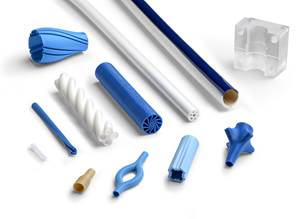Slower Growth for Medical Market
If there were ever a recession-proof industry, it would be medical.
If there were ever a recession-proof industry, it would be medical. Since 1966, real healthcare spending in the U.S. has risen on astraight line. The annual rate of change has not contracted in a single month during that time. Medical-device and equipment production has rarely contracted since 1972, and the contraction has been extremely shallow and very short. According to our own data, capacity utilization in the medical industry did not fall at all during the severe recession in 2009.
There are several reasons for all this. The U.S. has an aging population, and older people tend to spend more on healthcare. In fact, most healthcare spending occurs in the last two to five years of an individual’s life. Also, the government has created a virtual monopoly for the entire industry through a vast regulatory environment. The lack of real competition has enabled the industry to rapidly increase revenues and profits, which in turn fuel increased production.
Third, the nature of health insurance has removed consumers from purchasing decisions, which has allowed healthcare spending to increase significantly faster than it would have if they were more directly responsible for paying for their care.
The Affordable Care Act (aka Obamacare) is generally enhancing the second and third trends above. Despite the intent of the legislation, many individuals are already seeing the cost of healthcare rise significantly. Healthcare spending had been growing generally slower since the middle of 2002. But once talk of Obamacare began in earnest, the trend to lower healthcare spending came to an end. In the middle of 2010 healthcare spending began to grow at a significantly faster rate. In my opinion, this was a result of increased costs being built into the system as the industry prepared for passage of the healthcare legislation. Since then, healthcare spending has grown at a relatively constant rate.
Medical equipment and device production, while highly cyclical and more volatile than healthcare spending, tends to lag healthcare spending by about a year (see chart). So, during the 2000s, medical production followed the trend in healthcare spending with generally slower growth (note the falling peaks in the rate of change in production). But when the growth rate of healthcare spending jumped significantly, medical equipment production took off. In 2013, medical equipment production has grown faster than at any time since 2006. While the rate of growth in production should slow in 2014, it likely will remain relatively strong throughout the year.
Since December 2011, the medical equipment market has grown at a significant rate in every month but four. This is by far the best performance of any end market we track. New orders have grown in all but two of those months. However, the rate of growth was noticeably slower in 2013. This suggests growth will be even slower this year. Because production grew faster than orders in 2013, backlogs contracted for much of the year. This indicates that capacity utilization, which is the best leading indicator of capital equipment spending, will probably fall slightly in 2014. Capacity utilization leads capital equipment spending by about a year. Capital investment in the medical industry looks to be strong in 2014 (especially for auxiliary equipment and molds), but it will likely slow in 2015, if not the latter part of 2014.
While medical-care spending has grown faster since 2010 and medical equipment and device production has grown at the fastest rate in the last seven years, medical OEMs have become less optimistic about the future since the middle of 2012. My guess is that most are concerned about how Obamacare will affect their business going forward. And the increasing regulatory burden from Obamacare is making business conditions more difficult.
ABOUT THE AUTHOR
Steven Kline Jr. is part of the fourth-generation ownership team of Cincinnati-based Gardner Business Media, which is the publisher of Plastics Technology. He is currently the company’s director of market intelligence. Contact: (513) 527-8800; email: skline2@gardnerweb.com; blog: gardnerweb.com/economics/blog.
Related Content
What to Look for in High-Speed Automation for Pipette Production
Automation is a must-have for molders of pipettes. Make sure your supplier provides assurances of throughput and output, manpower utilization, floor space consumption and payback period.
Read MoreUse Cavity Pressure Measurement to Simplify GMP-Compliant Medical Molding
Cavity-pressure monitoring describes precisely what’s taking place inside the mold, providing a transparent view of the conditions under which a part is created and ensuring conformance with GMP and ISO 13485 in medical injection molding.
Read MoreAllegheny Performance Plastics to Enter Health Care Sector
The custom molder has secured multiple projects in health care and will be adding cleanroom and white-room spaces, as well as injection molding machines, in support.
Read MoreDuPont Buys Medical Product Manufacturer Spectrum Plastics
Purchase price of $1.75 billion for leading supplier of extruded, molded, and 3D printed medical components.
Read MoreRead Next
Beyond Prototypes: 8 Ways the Plastics Industry Is Using 3D Printing
Plastics processors are finding applications for 3D printing around the plant and across the supply chain. Here are 8 examples to look for at NPE2024.
Read MoreMaking the Circular Economy a Reality
Driven by brand owner demands and new worldwide legislation, the entire supply chain is working toward the shift to circularity, with some evidence the circular economy has already begun.
Read MoreFor PLASTICS' CEO Seaholm, NPE to Shine Light on Sustainability Successes
With advocacy, communication and sustainability as three main pillars, Seaholm leads a trade association to NPE that ‘is more active today than we have ever been.’
Read More
.JPG;width=70;height=70;mode=crop)





















